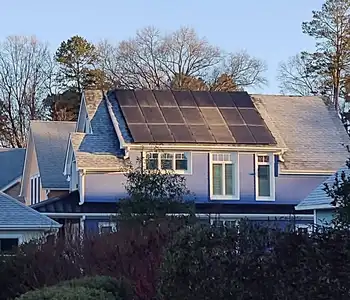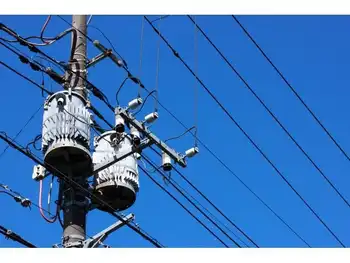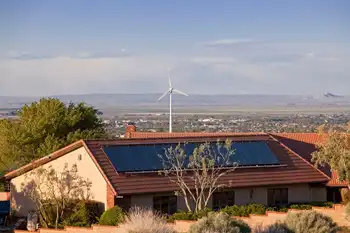NuclearÂ’s lost generation of workers
OLKILUOTO, FINLAND - On a flat, low-lying island nestled in crisp waters off the west coast of Finland, the first nuclear power plant ordered in Western Europe since 1986 is inching toward start-up.
Over 4,000 builders and engineers are at work on the sprawling Olkiluoto 3 project, whose turbine hall is so cavernous it could house two Boeing 747 jets stacked on top of each other.
When it is dark, which in winter is most of the day, enormous spotlights throw into focus scores of scaffolding towers and the red hauling equipment that encircle the grey, unfinished reactor building.
The heavy reactor vessel, made to withstand temperatures over 350 degrees Celsius, has been gingerly lifted into place by two cranes.
Inside the building, a dozen workers carrying a single pipe across their shoulders create a human caterpillar that carefully wends its way through tarpaulin-covered tunnels lit by lamps and chinks of daylight.
Walking through the expansive complex, still missing a domed cover on the reactor building, it takes a while to make out a peculiar but important detail: many of the engineers and building experts working here are in their late 50s and early 60s some are in their 30s, but few are in between.
There's a hole in the nuclear workforce, not just in Finland but across the Western world. For the moment, the operator of the Olkiluoto 3 plant, power utility Teollisuuden Voima Oyj TVO, is getting by with its most experienced staff. As those workers retire, though, the skills shortage could become a crisis.
"The nuclear industry has been in the desert for years and years and the question is how to revamp it and how to revamp human resources," says Colette Lewiner from Cap Gemini, a consultancy firm which raised concerns about the aging nuclear workforce in a report in 2008 and has warned "there will be no nuclear power renaissance" without efforts to tackle the problem. "The industry needs to ramp up and it needs to do it quickly."
Like a growing number of nations, Finland sees nuclear power as vital to its future prosperity. Olkiluoto 3 is the biggest investment in the history of Finnish industry. Helsinki wants nuclear power to provide more than a third of the country's electricity by 2020, reducing its dependence on carbon-emitting fossil fuels and energy imports from Russia. Globally, 15 countries are currently building 63 nuclear power plants, according to the International Atomic Energy Agency IAEA, the UN's atomic body. More than 65 additional states, newcomers to the technology, are jostling for advice on nuclear power.
Completion of Finland's new 1,600 megawatt reactor, built by French energy giant Areva and designed to withstand a plane crashing into it, is running four years late and will turn out far more expensive than its original 3 billion euro price tag. Areva alone has already taken 2.7 billion euros in writedowns on the project.
But delays and cost overruns are nothing compared to the skills crisis the project has helped expose, which is already affecting the nuclear sector around the world. "The global community is facing this big problem — where is this human resource?" says Yanko Yanev, head of the IAEA's nuclear knowledge management unit, set up 10 years ago when the Vienna-based agency first sounded the alarm. "When we started this program, people said, 'Ah, give us a break!' Now they are realizing the problem is more complex than they had first thought."
Simply put, the cause of the looming shortage can be pinned on two events: Three Mile Island in 1979 and Chernobyl in 1986.
In its first few decades, full of optimism and hope, the nuclear age was run and staffed by workers who had graduated between the early 1940s and late 1960s. People like Esa Mannola, who is responsible for nuclear safety at Olkiluoto. Mannola studied technical physics in the late 1960s and after a brief stint of military service, took a job working on the first two nuclear units based on Olkiluoto, which went online in 1979 and 1982. Like about 40 percent of TVO's staff, Mannola, 62, is over 50.
"Nuclear was a brand new technology and it was exciting," he says, sitting in a bright conference room not far from where enormous parts for the reactor have been shipped in and hauled into place. "I felt it would be important for the country's future."
Now head of a specialist team of around 20 people at TVO, the wry, softly spoken manager says he is always on the lookout for potential new hires, but has struggled at times to find young people to fill highly specialized roles.
That's not surprising. After Long Island and Chernobyl, many countries put their nuclear plans on ice or even phased out nuclear altogether, moving instead to more affordable fossil fuels. Students turned away from the nuclear sector, recruitment stagnated and many workers left. "Nuclear did not create a permanent demand on the market so that people could see it as a prospective career," IAEA's Yanev says.
The malaise lasted for well over a decade and created what Jorma Aurela, 51, chief engineer in Finland's energy department, calls a 'lost generation.' "Many of us were paralyzed. The people in this generation did not have a good future in front of them," says Aurela, who graduated just before the Chernobyl accident and as a young worker, used to occasionally tell people he was studying history because he was embarrassed to be associated with nuclear power. Around half his classmates quit the sector, he estimates. "Some have been found again but some are lost," he says. "They are lost to other parts of the industry or are mentally lost — they do not want to work for this industry again."
That's left older workers running Finland's plants, and could threaten the country's planned nuclear growth, especially as Helsinki has just okayed plans for two more new plants.
It's a similar story in other parts of the Western world. French utility EDF says around 50 percent of employees in its nuclear branch will retire by 2015 and that its workers are on average 43-44 years old.
In the United States, the peak age of workers in the nuclear sector is 48-52 while Britain estimates that up to two-thirds of its top-tier nuclear managers will retire by 2025. Worldwide, the nuclear industry employs around 250,000 people. Many first-generation nuclear staff have just retired or will do so in the next few years, taking with them skills and knowledge of complex, costly projects — just as the nuclear renaissance gets underway.
Sometimes referred to as a "silver tsunami," the departure of the first generation of nuclear workers is a big concern for the IAEA, which promotes civilian nuclear technology alongside its role as atomic watchdog. Many countries and private firms have new units planned or under construction, the agency said in a September report for a conference of its 151 member states. "They are facing shortages of experienced personnel and loss of knowledge as they look to replace retiring staff for their existing fleet while at the same time staffing new projects."
Finnish nuclear regulator Stuk says the lack of skilled workers is at least partly to blame for the delays at Olkiluoto. So many experienced nuclear manufacturers have left the business that project managers have been forced to look for subcontractors who then need nuclear training, the regulator said in a presentation in August. Building the next generation of power plants will be demanding, "because much of the earlier experience and resources have been lost from the nuclear industry."
And it's not just a lack of engineers. The global shortage runs from uranium miners to the waste-disposal experts who tidy up at the end of the nuclear cycle. "I've got colleagues running around Florida trying to find people to take their knowledge before they die," says Peter Waggitt, a uranium production consultant to the IAEA. "Most of the senior experts in uranium mining are pushing 50 and some of the best are over 70."
A fall in uranium prices in the late 1980s left scant incentive to enter the mining industry, while leaky, badly constructed mines gave uranium mining a bad name. But the ore is now trading at around $60 per pound, in real terms more than four times the 1990 price. More than 500 companies are involved in the sector and the IAEA says at least 30 new uranium mines will open before 2015. The workforce, says Waggitt, is struggling to keep pace.
In May 2008, BHP-Billiton said it would take longer than originally estimated to expand its Olympic Dam copper-uranium mine in Australia because the worldwide mining boom had created greater competition among skilled workers, higher prices and shortages of equipment. A skills shortage still hangs over the site, the world's biggest uranium deposit. The Australian government has estimated the country needs around 6,000 extra skilled workers during construction. Analysts have put the full expansion cost at $20 billion or more. Waggitt sees these problems as a warning to the wider industry: "Uranium mining is at the very beginning. If there is a problem in this sector it is a problem for the entire nuclear cycle."
In an attempt to tackle the shortfall, Finland is rushing out a blueprint that outlines how to get more young people studying nuclear energy. From his offices next to the presidential palace in Helsinki, chief engineer Aurela heads a 20-person committee which is assessing the needs of Finland's future nuclear workforce. The country wants to build another large plant at Olkiluoto by 2020. To staff such grand plans, Aurela says Finland will need to produce at least 100 nuclear specialists a year. At the moment it produces just 20 to 30.
After talks with industry, university and government officials, the committee will soon present a detailed report on what to do next. "It will come out in spring," Aurela says. "We don't have time for a year. We need to get the measures in place. We know some of them already — we only have two nuclear physics professors in Finland and we already know that that is too few."
One of those professors is Rainer Salomaa, who first got into nuclear as a way to escape the isolated southwestern port city of Turku where he grew up, 160 km 99 miles from where he now teaches near the capital. Producing the next generation of nuclear experts, says Salomaa, 62, should not be left to chance.
"With the development at Olkiluoto, people are much more excited," he says, sitting in his Aalto University office with its stacks of curled papers and heavy textbooks. "But when you are training new people, just to get an ordinary professional it takes around five years. It's a very slow process — and to get a professor it takes 15 years — that's one of the bottlenecks."
Student numbers in basic nuclear engineering at the university have gone up, to around 30 a year from about 12 in 2000, the low-point of the industry in Finland. Masters students in the field — who it is hoped will become the next generation of top-notch nuclear specialists — have risen to 6-10 per year from 2-3 a decade ago. That's an improvement, but nothing like what Salomaa says is needed. "For the moment we will survive, but once the two new units start at full speed the burning need will continue.
"The difficulty is that the number in the new generation anywhere is getting smaller. There's huge global competition for the bright students — they are wanted in economics, law — and engineering is not as fashionable as it used to be."
Finding the right people to fill all those jobs will not be easy. Before padding in flipflops and socks to a lecture theater, Salomaa explains what he is looking for in a student. "The courage to tackle non-definable problems," he says. "With nuclear engineering, you really have to have the courage not to give up."
At the same time, he wants students with a deep respect for safety and rules. His generation was rattled by two major nuclear accidents and had safety taught to them like a mantra. "The safety culture is a question of attitude. It has to be there from the start."
Few people have that mix: mathematically gifted, able to think outside the box, but also happy to abide by rules. On a grey, mild day in late September, some 30 young Finns who have at least some of those attributes listen to a lecture in a boxy, functional building on Aalto University's sprawling science and technology campus. "I could work in the nuclear industry, I think it has a future," says Karita Kajanto, a 21-year-old energy technology student in crisp, word-perfect English.
Like her other classmates, though, Kajanto notes that some are not so upbeat about nuclear physics. "Here at this university people have positive views but some friends studying humanities — and some people who don't really know about it — they have quite aggressive views that what we are doing is wrong," she says. To give them choices after graduation, many of her classmates also take classes in the much trendier renewable energies such as solar and hydropower.
One problem is cultural. "The way nuclear companies are managed and the way young people want to work are different," Cap Gemini's Lewiner says. "Nuclear companies can be quite hierarchical, it is very controlled — you are allowed to do this and not that. Some of that is needed of course, but it has to be softened."
Changing that image will take time — but it is possible. A recent study by polling company Gallup showed nearly one third of young Finns are in favor of nuclear power, the highest since the survey began in 1982. Ten percent were against it and the rest were neutral.
The country that has done the best job of promoting atomic power is France, which began its nuclear power program in the 1960s and now gets more than 75 percent of its electricity from nuclear. French firms, which have rounded up new employees at breakneck pace in the past half decade, say that drive combined with an increased involvement in training makes them less worried by potential staff shortages than they were in the mid-2000s. Areva, for instance, says that while it has recruited 53,000 people since 2005, the urgency has slowed: in part due to the economic crisis and in part because its needs are fairly well filled.
France even sees opportunity in others' problems. French universities have decided to teach some nuclear courses in English to prepare students for an international career and attract non-French speakers. "There has been renewed interest in training because of France's own needs and a worldwide nuclear rebirth," says Laurent Turpin, head of the Institute for Nuclear Sciences and Technology INSTN outside of Paris.
Several students, interestingly, said that having anti-nuclear parents pushed them to study the subject. "People around me were ecologists," said Olivier, a 24-year old masters student. "Because I questioned this complete refusal, I wanted to study nuclear by scientific pragmatism. I then realized it was a sector which had a future."
Rediscovering some of its original optimism and raising the industry's profile may help. "In some ways it has been kept pretty secret," says the IAEA's Yanev, 60, who became excited about nuclear power in his native Bulgaria as a teenager watching the space race in the 1960s. "It was definitely not explained properly to the public and it is complex. It is not so easy to understand the nuclear processes without the proper education."
Some governments have begun targeting female students and minorities. In Britain, where the government has plans for eight new nuclear plants to replace those due for closure over the next decade, the decommissioning authority has launched a drive to recruit young people.
"It was very much an image of a man in a white coat and a hard hat standing next to a big piece of machinery or a waste pond," says Carl Dawson, manager of Britain's nuclear graduate program which has taken in 35 people since it started in 2008. Dawson says the scheme focuses on students from different academic backgrounds who can then be "nuclearized" once on board.
One such graduate is 25-year-old Becky Read, who studied chemistry and biology at Birmingham University and met Dawson at a careers fair before she graduated two years ago. "Imagine, everyone else there had a little stall with brochures and his scheme had a massive silver inflatable igloo," she says. "The program sounded so different to everything else."
Now Read has done everything from assessing how nuclear buildings withstand earthquakes to explaining atomic waste storage to the public. She has been working in Vienna at the IAEA, learning about technical cooperation between member countries. Enthusiastic about the future of nuclear power, she nonetheless feels some in the industry could do more to pass on their knowledge to the new generation.
"Some people seem scared of change. They want things to stay the same. They might worry when they see some 'bright young spark' coming in," she says, sipping coffee on the flag-decked UN plaza in Vienna. "These are the people who built the reactors, so it feels like their baby."
Whatever efforts countries make, things might get even tougher. Some worry that China and India, which are rapidly expanding their nuclear power programs, could begin snapping up workers from Europe and North America.
More than two-thirds of reactors under construction worldwide are in Asia — primarily in China, which is building more than 20 and has around 40 more planned. According to statistics collected by the IAEA, China needs 1,200 graduates in nuclear engineering and technology a year. Chinese statistics suggest overall enrolment is matching demand but that it is struggling to recruit graduates in specialized areas of nuclear chemistry and the atomic fuel cycle as well as top managers. Nuclear power plant managers in Asia have told the IAEA that their best engineers are often poached to work on new projects, underlining the demand. "The problem in China is that they have too many young people but not the older ones," the IAEA's Yanev says, referring to the nuclear workforce. "The expansion is so fast that they don't have the necessary experience."
Fierce competition for skilled workers might force companies to entice older workers out of retirement in the Western world. "The industry cannot only count on the fresh minds that will be trained. That is not possible, it takes too long. It takes four to five years for initial education and some time inside the company before they are operational," says Cap Gemini's Lewiner.
Hans-Holger Rogner, head of nuclear energy planning and economics studies at the IAEA, agrees, and says the industry cannot afford any age prejudice. When uranium prices went through the roof in 2007, companies "really went to the old people's homes and said, 'Well, you can sit in your armchair rocking back-and-forth or you can get back in the field at 75 years old.' I guess a similar thing will happen — you bring back the old knowledge."
Rogner, 61, will leave the IAEA soon. Beginning his career in systems analysis after the oil price crisis in the 1970s, he says he plans to continue in the nuclear sector even if he officially retires.
"I am certainly not going to sit and twiddle my thumbs," he says. "There is a lot to do."
Related News

Duke Energy seeks changes in how solar owners are paid for electricity
CHARLOTTE - Duke Energy has proposed new rules for how owners of rooftop solar panels are paid for electricity they send to the electric grid. It could mean more complexity and lower payments, but the utility says rates would be fairer.
State legislators have called for changes in the payment rules — known as "net metering."
Right now, solar panel owners who produce more electricity than they need get credits on their bills, equal to whatever they pay for electricity. Under the proposed changes, the credit would be lower and would vary according to electricity demand, said Duke spokesperson Randy Wheeless.
"So in…




